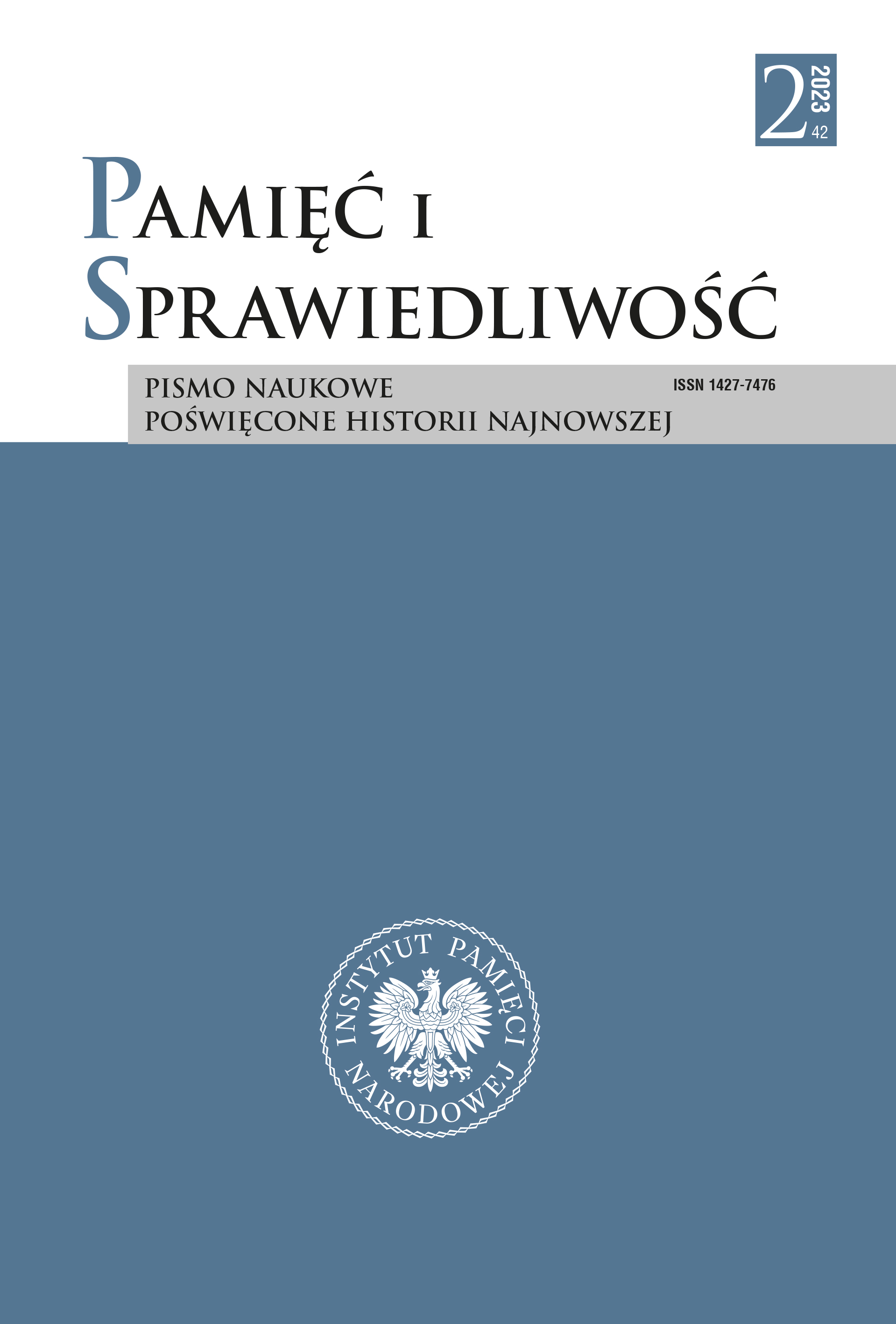Vol. 42 No. 2 (2023)
Tematem przewodnim 42. numeru półrocznika „Pamięć i Sprawiedliwość” jest edukacja i szkolnictwo w Polsce Ludowej. Komuniści, którzy rządzili po 1945 r., musieli odbudować wszystkie poziomy systemu kształcenia. Zgodnie z ich doktryną szkoła miała wychowywać i kreować obywateli lojalnych wobec nowego systemu i wspierających władzę. Badania nad historią oświaty w powojennej Polsce mają już swoją tradycję, ale nadal wiele spraw wymaga opracowania. Szansę na ich poznanie dają przede wszystkim archiwalia, do których nie było wcześniej dostępu. Nie bez znaczenia są również badania porównawcze, pokazujące politykę władz wobec edukacji w innych krajach podporządkowanych ZSRS. W numerze przedstawiono rozmaite problemy związane ze szkolnictwem: odbudowywanie systemu edukacji po zniszczeniach II wojny światowej, jego funkcjonowanie w realiach PRL, a także działalność konspiracyjną i opozycyjną uczniów oraz nauczycieli. Nie zabrakło artykułów autorów zagranicznych, obrazujących wspomniane zagadnienia w innych krajach bloku wschodniego. W dziale „Varia” znajdują się teksty dotyczące różnych kwestii, m.in. związanej z Polską działalności naukowych instytucji sowieckich i stosunku Władysława Gomułki do relacji polsko-niemieckich. Pojawia się również próba weryfikacji jednego z mitów dotyczących Powstania Warszawskiego. Odrębną grupę stanowią artykuły na temat „Porozumienia” rządu komunistycznego z Episkopatem Polski z 14 kwietnia 1950 r. W dziale „Materiały i dokumenty” znajduje się naukowe opracowanie wspomnień poświęconych koegzystencji grekokatolików z ludnością obrządku łacińskiego na polskich Kresach Południowo-Wschodnich. Całość uzupełniają recenzja z ważnej edycji źródłowej oraz sprawozdanie z konferencji.
 Język Polski
Język Polski
 English
English
 Deutsch
Deutsch
 Français (France)
Français (France)
 Italiano
Italiano
 Русский
Русский


 PDF (Język Polski)
PDF (Język Polski)

